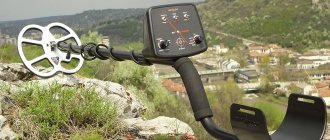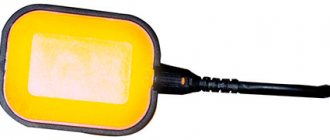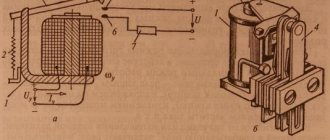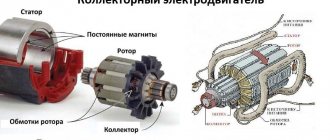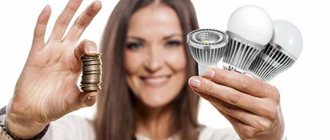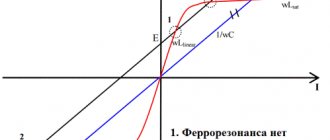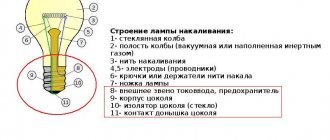Here you will learn:
- Operating principle of an electrode boiler
- Advantages and disadvantages of electrode heating boilers
- Installation and operation of electrode water heaters
- DIY electrode boiler
- Conclusion
- Electrode boilers for heating a private house: reviews
An ion or, as it is also called, electric electrode boiler is a direct-flow water heater that can quickly and efficiently heat liquid. The device is used mainly in dachas or country houses, since it is easy to install and permission for use is not required. The only significant drawback is that it is quite expensive to operate as the main method of heating in an apartment.
Instead of a heating element or coil in an ion boiler, electrodes act as heating elements. They have good efficiency and do not consume too much electricity compared to other electric heating devices. The design of the device is quite simple, so you can assemble it yourself.
Operating principle of an electrode boiler
Electrode boilers operate from alternating electric current with a frequency of 50 Hz. The name itself, electrode boiler, says that the boiler contains electrodes; they can be called plus and minus. The designation of the plus and minus poles is arbitrary, since the potential changes 50 times per second.
The coolant for electrode boilers has a special chemical formula that ensures ionization of the coolant with the release of a large amount of heat. The chaotic movement of ions and the constantly changing potential of alternating current increases heat generation.
Blitz tips
- By organizing space heating using an electrode unit, you can save three times: firstly, on the operation of the device itself due to its efficiency; secondly, on its installation, by doing it yourself, following simple instructions and, thirdly, by constructing it from your own parts. The second and third options allow you to save up to half the cost of constructing a heating system, but do not provide guarantees for the performance and efficiency of the equipment.
- To heat large buildings with several floors, it is recommended to use not 1 heavy-duty expensive heat generator, but 2 or 3 devices connected to each other into 1 heating system.
Advantages of an electrode boiler
First of all, this type of electric boiler is not afraid of voltage drops. The process of ionization of the coolant will also take place when the voltage drops to 180 Volts. This is a great advantage, especially for areas with unstable power supply.
Secondly, the operating principle of these boilers allows them to be very small in size. Everyone is familiar with the previously frequently advertised Galant boilers. Example in the photo.
Thirdly, electrode boilers are safe. Again we return to the principle of operation. If the coolant disappears from the system, the boiler simply will not work. There will be no emergency situations, which means there is no need for automatic monitoring of the presence of coolant.
Fourthly, unlike heating elements of boilers, scale does not form in electrode boilers and their service life is extremely long.
Installation and Operation Requirements
boiler connection diagram
- Installation of such a system requires the installation of automatic air vents, a safety valve and a pressure gauge. Shut-off valves are fixed behind the expansion tank.
- The boiler, due to the nature of its operation , is fixed only vertically on its own mount.
- When designing and installing such a unit , a copper wire with a thickness of 4 mm and a resistance of up to 4 ohms is used to ground it. It is connected to the zero mark, which is most often located at the bottom of the boiler.
- Before installing the heat generator itself , it is necessary to flush the heating pipeline circuit using water with the addition of special agents. If this is not done or if you immediately pour poor quality coolant into it, containing impurities, suspensions and other foreign elements, the efficiency of its heating by the boiler will significantly decrease, and energy costs will increase.
- When choosing radiators for a heating system , it is necessary to correlate them with its total volume, which includes the entire displacement of not only radiators, but also pipes. The optimal ratio is 8 liters of volume per 1 kW of heat generator power. If this threshold is exceeded, the unit for heating the coolant will have to work longer in active mode, and this increases its energy consumption.
- When arranging heating on electrodes, it is necessary to use aluminum or bimetallic alloys, since other materials contain more impurities that reduce the electrical conductivity of the coolant. In an open-type system, it is necessary to install radiators with a polymer internal coating that prevents air from entering and slows down their corrosion. This does not apply to closed loops.
- When using an electrode heat generator , you should avoid installing cast iron radiators that contain various impurities, which affects its efficiency. In addition, cast iron elements are larger in volume, which means that electricity consumption when heating them will be greater.
When choosing an electrode-ionizing system, like any other heating system, it is primarily based on its power, which must correspond to the structural features. These include the total area and volume of the premises heated in it, the volume of coolant in the circuit and the capabilities and limitations of the electrical network.
In practice, each kW of power of such a heat generator is capable of providing heat to a room with an area of no more than 20 square meters and a volume of up to 60 cubic meters with 40 liters of coolant in the heating circuit. If you choose a dual-circuit heating system, the power increases by a quarter.
Flaws
Ionization of “pure” water will not occur. And here lies the first drawback of electrode boilers. Water for filling a heating system with an electrode boiler must be distilled and requires preparation or a coolant requires purchase. It is recommended to add soda or salt to water in a volume of 5-8 mg per 100 liters.
Secondly, we return again to the principle of operation, in fact, the alternating current in this boiler flows through the coolant, which means that current leaks are possible to the metal devices of the heating system, in particular radiators. This obliges, when installing electrode boilers, to strictly observe grounding rules and protect people from differential currents.
Third. I said above that electrode boilers do not suffer from scale formation. However, the opposite effect is observed in them. The boiler electrodes become smaller over time, as they constantly “give up” their particles. This means that over time the electrodes will need to be changed. How often? As often as in heating element boilers, once every five years, possibly more often.
Rating of the best manufacturers
Many foreign and Russian companies produce ion heaters.
The following manufacturers have the best combination of characteristics:
- Galan is a Russian company offering a wide range of boilers of different capacities. The devices are low cost and reliable. Disadvantages - expensive branded coolant and a stepwise power control system.
- EOU is a Ukrainian brand. The company produces equipment with power from 1 to 36 kW. The declared service life of the products is 30 years. Disadvantages of boilers are high prices, frequent problems with automation.
- “Coterm” is a Russian company engaged in the production of electrical equipment. It produces devices characterized by fast heating of the working fluid, high-quality assembly and compact dimensions. Typical disadvantages are the limited functionality of the automation, the need to fill the heating system with its own Coterm Eco coolant.
- Beril is a Latvian company whose products stand out for their reliability and advanced functionality. The automation system is equipped with several operating modes, degree-by-degree power adjustment, and overheating protection. Provision is made for connecting a GSM module and external temperature sensors. The main disadvantage is the high cost.
- Buderus is a German brand that produces a wide range of gas equipment. The devices are distinguished by their reliability and long service life. Among the electrode models there are two- and three-phase units. The main disadvantage is the price, which is higher than that of Russian devices.
Galan electrode boiler models
Single-phase models "Ochag"
- Galan OCHAG 3. This model is a single-phase ion-type boiler. Suitable for rooms up to 40 meters or 120 cubic meters. There are several configurations.
- HEATH 5. This is a single-phase model for up to 70 meters or 230 cubic meters.
- OCHAGA 6, Also a single-phase model for rooms up to 90 meters or 280 cubic meters.
Three-phase Geyser models
- Geyser 6 (380 V) for rooms up to 100 meters or 250 cubic meters.
- Geyser 9 for rooms up to 125 meters or 340 cubic meters. Can be connected to 220 or 380 V.
- Geyser 15 will heat 203 meters of area or 550 cubic meters of space.
Powerful electrode boilers not used for home heating
- Vulcan 25 will heat any room, power step 25 kW.
- Vulkan-36 will heat any room, power step 36 kW.
- Galan Vulcan 50 will heat any room, power step 50 kW.
That's all about electrode electric boilers!
©Obotoplenii.ru
Articles on the topic
- Heating scheme for a house up to 100 meters
- Glass heaters
- Baseboard heating: description, application
- Heating the house with an electric boiler
- Electric heating boiler (electric boiler): device, connection to power supply
Experts advise
Purchasing heating equipment is a rather complicated issue. It must meet many parameters, but which ones should you pay attention to first? Experts recommend first calculating the boiler power.
Moreover, for electric models, the network to which it will be connected depends on it. Most models with a power rating of up to 12 kW are single-phase, and those exceeding this threshold are three-phase. Typically, the boiler power is calculated using the formula, or in the case of good insulation of the building, it is taken at the rate of 1 kW per 1 m².
The next parameter is the efficiency of the device. It depends on its type, as well as on the presence of several stages of power adjustment. This parameter makes it possible to rationally use energy, especially in autumn or spring.
It is necessary to pay attention to the equipment, it can be different. There are electrode-electric boilers equipped with an expansion tank and a circulation pump, as well as a safety group, that is, they are a mini-boiler room. But there are also the simplest samples that do not have any additional equipment, which are best used only as backup sources of heating the coolant.
Only taking into account all the considered parameters can you choose the most optimal boiler option, which will consume energy economically and maintain a comfortable temperature in the room.
Components of the device
The electrode boiler has a simple design. To create it, you need several metal parts that are welded together. This allows you to quickly obtain a finished design.
To install the boiler, metal parts are required, which are connected to each other by welding
Required materials:
- welding machine;
- steel pipe;
- steel rod;
- tee;
- coupling;
- insulators for terminals and electrodes;
- terminals;
- Bulgarian.
Beginners are recommended to use a welding inverter, despite its high cost. This is an ideal device for those who want to continue welding in order to pay for the device. If you have the skills, you can work with conventional transformer welding. The main thing is to make high quality seams.
A steel pipe will become the body of a homemade electrode boiler with your own hands. You can choose the dimensions yourself. Experts recommend choosing a material with a diameter of 10 cm and a length of 30 cm. You will also need a tee and coupling. The first one is screwed onto the tube. A coupling connects the housing to the heating main.
The steel rod will act as an electrode. The ideal length is 12 cm. You will also need insulators and terminals. Materials are processed using a grinder.
